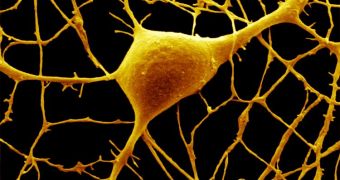According to a new scientific investigation conducted on mice, deleting a single gene from the rodents' cerebellums can lead to the manifestation of a host of symptoms consistent with the presence of autism. The finding has extensive implications, particularly if a similar effect can be demonstrated in humans.
During the same research, investigators at the Harvard Medical School also determined that a commonly used immunosuppressive drug, called rapamycin, has the ability to prevent these symptoms from manifesting themselves after the gene is deleted.
Interestingly, the HMS team also found that the gene in question is part of the Tuberous Sclerosis Complex (TSC), which previous studies have tied to the development of a rare genetic disease.
The new work shows great promise towards furthering our understanding of autism and autism-spectrum disorders (ASD). More than half of those diagnosed with TSC go on to develop autism, so it's now clear that this particular gene plays an important role in the emergence of autism.
Researchers can now carry this work forward, and develop novel methods, drugs and therapies to tweak the activity of this gene, or shut it off completely. Doctors cannot keep patients on immunosuppressive drugs for long, since the chemicals shut down the immune system.
This class of drugs is generally administered to patients who receive new organs during transplants. By suppressing the immune system until the new organ is assimilated, doctors ensure that the bodily part will not be rejected, and that the procedure will succeed.
“We are trying to find out if there are specific circuits in the brain that lead to autism-spectrum disorders in people with TSC,” explains HMS associate professor of neurology Mustafa Sahin, who is also based at the Boston Children’s Hospital.
“And knowing that deleting the genes associated with TSC in the cerebellum leads to autistic symptoms is a vital step in figuring out that circuitry,” adds the expert, the senior author of a new paper detailing the findings.
More details of the work are published in the July 1 online issue of the top scientific journal Nature. This study is the first to find a molecular component that dictates the role the cerebellum plays in the development of autism.
“What is so remarkable is that loss of this gene in a particular cell type in the cerebellum was sufficient to cause the autistic-like behaviors,” concludes HMS neurology instructor and first paper author, expert Peter Tsai.

 14 DAY TRIAL //
14 DAY TRIAL //